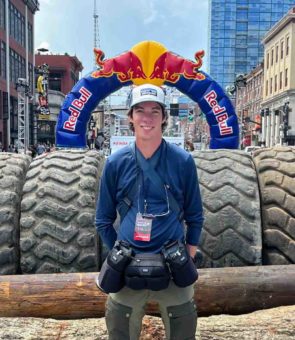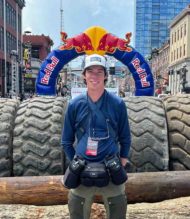Posted on November 7, 2022
Matthew Trabold has a beautiful eye for detail and travels to the ends of the earth to capture the most spectacular images, and he’s found a way to make a business of it. And in this episode, he joins Steph Silver to tell us all about it! Matthew takes us across his photography journey, where he was able to turn his passion into profit. He also talks about DTM photography, his passion for this niche, and how he sees and captures the world through the lens. How can you transform your artistic pursuits into a business? How do you get in front of people and start making money? Follow along to this great conversation as Matthew shares his wisdom and more!
—
Listen to the podcast here
Passion To Profit: Starting A Photography Business With Matthew Trabold
This episode is part of a local series focused in partnership with Wimberley Valley Radio and brought to you by Ozona Bank. Our guest is Matthew Trabold, an amazing photographer who captures the magic of landscapes, motorsports and architecture. Thank you for joining us, Matthew.
Thanks for having me on.
I am so excited to talk to you. The journey that you’ve been on over the last couple of years has been insane. Let’s start though with you telling us a little bit about how you got started in photography or what you were doing before that.
I got started, honestly, probably when I was twelve years old. I went on a trip with my family. My mom had a dinky little Canon camera with her. She let me take photos with it randomly. They came out pretty good. As I was going through school, I stopped paying attention to it. When high school rolled around, I got back into photography and started taking a photography class in high school.
From there, I found a local photographer in Austin that decided that he was cool mentoring me. I wanted to learn faster than I could at school. His name is Rick and Rick helped me accelerate my progression. Instead of only doing film photography from school, I was able to get into digital immediately and start doing work with Lightroom, Photoshop and what at the time was the current technology and still is, honestly.
That was rocket fuel for my career. I learned any and everything as quickly as I could. When I got to college, I did sports photography for the University of Miami. I covered football, basketball and swimming. The first time I shot for them, I got recognized by National Geographic for a photo I took of a diver. I kept doing that throughout my four years of college.
I got out of school and worked as a web developer for two years. I did not like that so much. I liked the exploration side of it and that you could constantly learn new things but I’m not well-equipped to sit in an office all day. I decided to leave web development and go full-time into pursuing photography as a career. That was years ago. I have seen more crazy things than I ever thought I’d see in my life.
The journey has been interesting. Turning a passion, especially when it’s an artistic passion into a business is quite interesting. A lot of people who are artists will go into graphic design and some are happy with that transition and some aren’t. When you’re in graphic design, it’s information design for someone else and everybody gets to breathe down your throat and tell you that it’s wrong or it’s not pretty. Going into business for yourself as a photographer, how did you get started?
I originally pursued landscape photography. That’s always been my favorite thing to photograph. From a business perspective, it’s one of the harder things to make a living with. There are all sorts of different avenues you can go with it. Ultimately, it ends up in the teaching area of things, which I don’t mind at all and I want to get into teaching people more. You could also sell prints but that’s not very easy either.
When I decided to full-time go into photography, I knew I needed multiple avenues of income so I decided to not only do landscape photography but then got involved with a rally school here in Austin called Rally Ready. I started taking photos of them and met some of the people that worked there. That got me jump-started in the world of motorsports, which made a good bridge between what I was doing in college the sports photography. I came full circle and started doing sports photography again, more or less. Motorsports is a little more niche than football or basketball but the concepts carry over from one genre to another.
Even some of the stuff I learned doing landscape photography helps me a lot in the motorsports world. Everyone in this business has a unique vision in the way that they take photos. Starting with nature and being trained in that way, once I got to motorsports, it gave me a unique enough eye to create things that other people aren’t out there creating. Those are my avenues. I get hired by teams to photograph their drivers and their cars. I work over in Europe doing that for DTM. On the landscape side, I feel any free time I have between races with getting out in the world and trying to go to the most extreme places I can to take landscape photos.
For those who don’t know DTM, tell us a little bit more about what that is and what that entails for you.
DTM is the highest form of GT3 racing. It is a sprint race. It’s an hour-long race. It’s got the top drivers from around the world competing across every brand. You have Lamborghinis, Ferraris, Porsches, Audis and anything you could think of. They have about 8 race weekends and 2 races each weekend. They’re covering about sixteen races and they travel all around Europe. It’s based out of Germany but you end up going to Italy, the Netherlands, Austria and Belgium as well.
What that entails for me is I got hired by a team in 2021 in DTM Trophy, which is the series feeder into DTM. It’s generally younger guys racing, anywhere from 18 years old up to 35 and a little older. It was my assignment to capture the environment, focusing on our team specifically. We had four drivers on our team. I’ve mainly focused on our cars and then tried to capture the atmosphere of each one of these events.
These tracks that we go to are some of the coolest tracks I’ve ever seen in my life. I previously had done Porsche Sprint Challenge here in the US, which took me to many iconic American tracks but there’s something about Europeans and racing where they treat it more like a religion than a sport and get into it. It makes for great pictures. I did that in 2022 and it was a blast.
You talk about it so nonchalantly. You’re going all these countries, doing all this stuff, seeing these amazing cars and meeting amazing people. I met you in 2020 when you were first getting started. You were trying to figure out how to make a living with photography. You started thinking people are paying for marketing photography and architectural photography. It was a pandemic timeline so the question then was, “How do I get in front of those people and start making money?”
Something I still chase constantly is trying to figure out how to improve on the business side of things. I feel like I have the creative side more nailed down. The business side has always been difficult for me. It’s a tough business to jump fully into because you get to see all these cool things and go meet all these incredible people but it’s also an isolated thing that you’re doing on your own.
You’ll meet people on tracks that are in the media. You’ll meet all these drivers but the reality is you all have very nomadic lifestyles so you’ll have these friends all over the place but at the end of the day when you’re at your office editing your photos or doing your thing, you’re solo. Most people are in offices operating on a normal schedule.
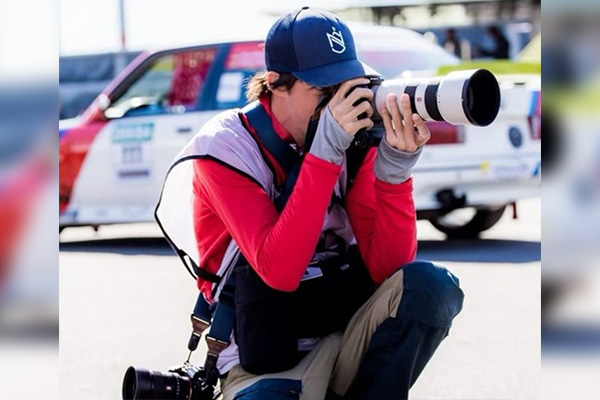
Photography Business: The reality of being a photographer is you have a very nomadic lifestyle. You’ll have friends all over the place, but at the end of the day, when you’re at your office editing your photos or doing your thing, you’re kind of solo.
I don’t have a schedule per se, other than having to show up to races. When people hire me to do it, I have a lot of flexibility to move around and do all these things. It can sometimes be a little isolating overall but in my view, I don’t mind the isolation so much because I get to do all these cool things. I need to work on finding a balance at some point.
That’s what we first started talking about. No matter what you are capturing with your camera, you have to get out and meet people. That part got you to the rally school. Your dad took you one day but then we talked about you getting out and getting to know the people and then you connected yourself to a driver. That journey with the driver is what got you connected or on the path of where you are.
I met Jordan Wallace at Rally Ready who was working there. Dave, who owned Rally Ready, was kind enough to let me photograph him as well as their mechanics and everyone. Jordan was one of the guys teaching out at the ranch. We went to a race week at Circuit of the Americas. After photographing Jordan there, he then ended up in a Porsche Sprint Challenge. He asked me to follow him through that. He got a ride in DTM Trophy so I followed him over to Europe to cover him doing that as well.
It snowballed into this thing I never thought I’d be doing. Even through the Rally Ready school, I was able to photograph a dirt bike race out there called Red Bull Hard Enduro. I never heard of it before. All these insane dirt bike guys do these races where they try to set up the hardest course possible in that area and then do it based on position, not necessarily time, which blows my mind.
They’re going through swamps. They’re destroyed and covered in mud. They’re some of the craziest athletes I’ve ever seen. I met someone out there named Andrew. Andrew had been in the dirt biking world for quite a while. We met at that event and I work together with Andrew as well, covering Sherco pro riders sometimes around the US when I’m not doing the DTM stuff.
That’s been a whole other world that I got thrown into in 2021. I don’t know which I like the most but the dirt bike guys are insane. It’s cool because when you’re shooting cars, you can’t interact with them. They’re far away on the track. You could yell at these dirt bike guys if you wanted and they’d be able to hear you. That’s pretty fun.
What’s interesting is our original conversation was not necessarily about what you were passionate about. It was photography but you were like, “This is stereotypically the best way for photographers to make money.” Your body, brain and soul kept pulling you into the things that excite you, which are motorsports and landscapes. We didn’t mention that you also take photos of people’s prize cars and collections. As you get out there and continue to push into your passion, you’ve been able to meet people and build relationships that have bit by bit snowballed into a bit more of a career.
Cars are weird in that way. A lot of people are obsessed with them. Once you’re in the world of automotive photography and you start talking to people about it, everyone has one little thing here or there that they love in that world. You can make a career out of chasing these guys. Location matters more than I realized. I’ve got friends that live in LA and who are surrounded by the craziest cars all the time. LA draws either people there are already drawn to the car scene or the car scene was drawn to LA. I don’t know which came first but I visit there and it’s unbelievable. You can make very unique relationships through motorsports. I’ve been lucky enough to be able to do that.
You can make very unique relationships through motors sports. Click To TweetSomeone gave a photo session to their husband as a gift for his prize car. It’s such a great idea.
That was cool. It’s Lamborghini. That’s sweet.
What do you think makes you so passionate about photography?
Photography never ends. You can always improve and learn something new. If you get tired of photographing one thing, you can start chasing another thing but they always come back together at some point. Even if you stop doing landscape photography per se and start doing motorsports, whatever you did over there helps you and the next thing. I’d separate dirt biking from car racing on track even though they’re similar but the techniques carry over from the DTM to the hard enduro racing.
Hard enduro racing is out in parks and sometimes national forests. I’m more focused on everything around these riders rather than just the guy on the bike. My images have more of a scenic look to them. I’m not trying to isolate the guy on the bike. All these things evolve. My friend Tyler out in Los Angeles got me addicted to film so my next rabbit hole I’m going down is trying to do 4×5 large format films.
Through DTM season over in Europe, I accumulated some medium format 35-millimeter cameras and all the old film gear. I never want to stop learning. I’m always going down some other rabbit hole trying to figure out how to evolve what I’m doing and make it either better or a little different. My style is always changing. That’s why I’m obsessed with it because it never ends. It takes you to some of the most incredible places on Earth.
I’ve worked with a lot of photographers over the years in marketing. Even in marketing, I felt like there were two different types of photographers. They think of themselves as film or digital. For me, I see those who capture the object and the time and space and some capture the artistic details, the feeling and the magic of the space. With your attention to detail and what you see in the world, you see it a little differently than most people. It’s been more on how did you capture the essence of that whole place? How did you see that one little detail and turn it into a beautiful work of art? It’s amazing.
Honestly, I’ve always seen things a certain way but it’s changed and improved. When I look at my old pictures, I don’t know what I was doing. When I look at my stuff, I’m pretty excited about it. It’s a lot of looking at other people’s work. Several photographers inspired me early on and the ones that inspire me now. I’m always trying to evolve. Even when it comes to compositions and colors, you fine-tune things here and there over the years. At the end of the day, it helps your whole body of work to improve. Every place requires a certain focus and researching ahead of time, having an idea of whether the environment is a track or layout of the track and all these things. They all play a role in that.
You have two different worlds that you jump in and out of for your photography. You have the motorsports and then the landscape. With landscape, you do somewhat for yourself but you also have prints available online.
Yes, I do.
What’s your website? Is it TraboldPhotography.com?
Yes, it is.
When did you decide that you were going to go to the ends of the Earth and stay there from sunrise to sunset and beyond?
The first time I had to do it was the summer between my junior year and senior year of high school. I went to an intensive program at Rocky Mountain School Photography up in Montana. The school hours honestly required you to be up at those times. As I started taking workshops with other photographers that I looked up to, the landscape photographer’s day-to-day life when they’re on assignment is you have to be up at sunrise and sunset.
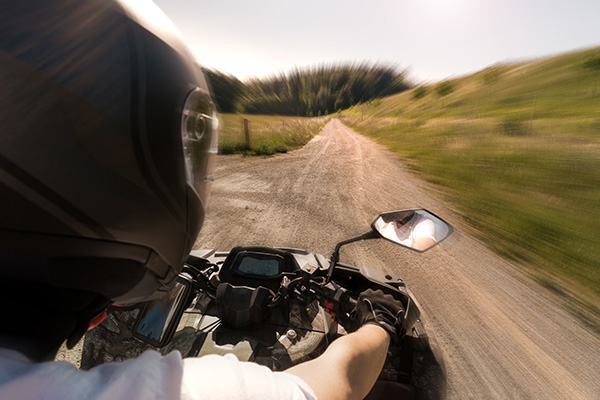
Photography Business: With motorsports, you have to be on all the time. You can’t miss a moment.
I got more and more used to that. It requires being not external necessarily but generally when I do it, I wake up for the sunrise, sleep all day, wake back up for sunset, go back to sleep all night and do that so I have enough energy to function. Sometimes you don’t have time to sleep during the day because you have to scout other things. I got used to that timeframe.
The racing is a little more forgiving. Thankfully, it’s not so extreme but it’s tiring in its ways. You walk a lot. It’s loud all the time. It’s got those things going for it. Maybe the sound puts you on edge after a while but there’s so much stimulation in that environment that at the end of a 3 or 4-day race weekend, you are fried.
Weddings are very different, except that if anything special happens, you’re expected to capture it. It’s the same thing with motorsports. You’re capturing all the general action of the day but then if anything at all happens and they go, “Did you see that,” and you go, “What,” you’re in trouble.
If you miss something, it’s not great.
You have to be on which landscape happens in front of you unless there are animals but you can plan for it. Do you have one that you are more drawn to, landscape versus motorsports or do you like the balance of it?
From the timing perspective, in motorsports, you have to be on all the time. You can’t miss a moment. Even though the landscape photography stuff has drawn out, a good example would be I was in Zermatt in Switzerland. I knew I wanted to get to this lake for sunrise and I woke up. I thought I had a 10-minute timeframe at the end of the hike to be at the spot I wanted to be, get set up and for the sun to come up, which was correct but about a quarter mile away from the spot, I somehow navigated myself the wrong way in the dark and then had to climb over a boulder field to get up to this lake.
I got there right on time but did not have enough time to explore as much as I wanted to. I had to commit to something and hope that it worked out. Thankfully, it did work out. Motorsports and landscapes all have their time constraints depending on when you’re able to wake up or not. They are intense in different ways. You can only plan so much in either instance. You don’t know whether the driver you’re following is going to end up on the podium and if he does, you got to race from one end of the track to another part hoping that you got the photos that he needed on track and the other days.
While he’s out there racing, you think he’s going to make it. There are all these little things. I would say it depends on the time of year. I like both. It’s hard to decide. With the cars, I love the environment, the people and their passion for motorsports. It’s such a never-ending world. If you shoot GT3 cars and got GT4 cars, have classic cars and every car under the sun, it’s always a different target in different tracks. It’s outside so the conditions are always changing like the landscape stuff. I like to be in the most extreme conditions. I don’t know why but it’s so fun.
Speaking of which, you have something new coming up where you’re combining education, landscape and travel. Tell us a little bit about that.
I have created a trip to the Lofoten Islands up in Norway. It’s in the Arctic Circle and it’s a place I had always wanted to go to. I’ve had the great fortune of being able to go there in the fall right when the leaves were changing, which I did not expect. It was amazing. I had three days there. It’s an archipelago. All these islands are connected. You have these incredible fjords lining these islands and then the waterways. It has incredible architecture, little fishing villages and all these different things.
I had such a good time that I wanted to bring some people along. I created a trip that’ll be in the Lofoten Islands. People will be able to learn what I know in the landscape photography world. I’m bringing my friend Tyler Long who’s a videographer, who can teach people all about video and flying drones because it’s also a great place for that. Tyler only shoots film. If people want to learn that as well, they can do that. I believe that I know all the digital side pretty well. It will be from February 27th to March 4th, 2023. The sun is only up for five hours a day. It doesn’t ever get more than 5 degrees above the horizon. It will be the craziest experience ever and cold.
There are so many different things to capture.
Yes. I’m so excited.
You mentioned a lot of places that you’ve gone with the motorsports. What are some of your favorite places that you’ve captured for landscape?
Iceland is up there. A lot of people go there but it’s still amazing. New Zealand, every time I go there, I have a great time. Zermatt surprised me. I’ve been there several times. This time was way more productive than the other times. I only had two days there. I have a very clear schedule of what I wanted to do. The time constraint forced me to plan well, get out and go to where I wanted to be. That was great. My favorites are the most extreme places. Norway would be at the top of the list. That was nuts. Every place has got a unique beauty. Lake District in Italy is very beautiful. It goes on and on. You could drop me anywhere and I’d be happy to find something to shoot.
Every place has its unique beauty. Click To TweetDid you go to Jordan also?
Yes, I went to Jordan in Petra. That was wild. I still don’t understand how they built that place. Petra itself was cool but the desert surrounding it was what amazed me. We hiked for five days and slept in tents in the middle of the desert. When you’re hiking, somehow you’re up on this mountain ridge overlooking. It feels like the entire world but I could never get a sense of what elevation we were at because it seemed like we were 8,000 feet up but I don’t think there are mountains that high. I don’t know. It was weird but it was amazing. A desert is wild.
What has been the biggest photographic challenge that you’ve come across so far?
Not packing everything that you thought you packed, it’s probably the worst. Showing up somewhere and not having what you need is probably the biggest challenge that will never disappear. For me, that’s the hardest. Probably the hardest lesson I ever had was I went to Colorado for the leaves changing a couple of years ago. I had spent five days there off-roading all around Silverton and then I went to Ridgeway. I saw all the light changing and all this beautiful stuff. Despite how long I’ve done this, my shutter speed wasn’t fast enough in any of my pictures for the five days and every picture was blurry. That was the hardest lesson I’ve ever had because I had spent five days and nothing came out of it.
I would also remind our readers that Matthew is a perfectionist with his photographs. By him saying they were blurry, they’re still probably 1,000 times better than anything most people on this planet would have captured. Is that difficult for you? You sell the prints online on your website of these awesome travels. They’re in particular sizes and printed at particular places. Is perfectionism its own challenge?
Yes, it can be. I’m sure I have many photos that no one’s ever seen because there was a light pole in it that I couldn’t get rid of after the fact or a random pedestrian with a jacket that was too bright that annoyed me. In most instances, people probably wouldn’t even notice these things but because I notice them, I don’t let people see those pictures. That can be hard.
Another thing that I ran across was when I was in the Netherlands for the tulip season. I went to the famous gardens there and didn’t have a plan necessarily. I knew I wanted to do macro photography. I had an idea because I follow this Dutch photographer who takes these incredible flower photos. I didn’t necessarily know how he took them. They look otherworldly. My general goal is to create otherworldly-looking macro flower photos.
With no plan, I executed it one day but then when I went back to the gardens two days later with the sole focus of doing only that, I couldn’t do it again. I couldn’t replicate me doing it on a whim when I was honed in on it. That’s a weird thing you don’t necessarily have control over because sometimes when you plan a lot, it turns out great. Other times, when it’s a spur-the-moment kind of thing, it comes out better than you ever realized. That’s been cool to see, especially on the film side because you forget what you shop for and then you get it back. You’re like, “I don’t even know where that was from or what I was doing but that looks sweet.” It’s nice.
As a mom, something that I miss about film is taking the whole 24 photos from a birthday party, waiting a week to send in the film, getting it back and then you’re like, “What? I don’t even know who did that, how and what that person was doing. I don’t remember that happening.” With digital, you look at it immediately and you know but you also know what you need to retake immediately.
You would hope so but I’ve had instances like my fall trip where I never looked at them and I should have.
Sometimes it’s hard, especially when you’re out off-roading and driving around. What have you learned over the last couple of years that you’re happy that you know now that you didn’t know when you started trying to make this thing work?
My approach to this has changed. It’s more about pursuing what I’m interested in to the best of my ability. Not completely disregarding but letting all the noise around me drain or fade away. You have to be critical of yourself because the best judge of your work other than other professional photographers looking at it at the end of the day is yourself. Critiquing yourself that much that often can get tiring. What you don’t need is external opinions coming in and trying to direct which way you’re going to go with your career.
You are the best judge of your work. Click To TweetSometimes blindly chasing things and hoping that they’ll work out is the best approach rather than methodically trying to plan every step that’ll get you to that place. With methodical planning, while sometimes it can be successful, other times, you’ll get so overwhelmed with the details and the timeline that you’ve laid out. In my instance, sometimes it’ll stop me before I even got started on something so I’ve decided or learned along the way to commit to something and go at it 100%. It will work out in some way or another. If it doesn’t, you probably learned a ton of things along the way anyway so it’s worth it.
Thank you for that. That’s great advice for every career to shut out that noise and go passionately in the direction that feels right. Shut out your noise too because sometimes that’s the worst, as you were saying. You said sometimes the details will stop you on your track or somebody else’s criticism or your criticism. The other thing that I noticed working with you is because of your ideas of perfectionism, sometimes not thinking you have the right gear or perfect plan, whether it’s a plan or a piece of something will stop you from the beginning. Have you gotten better at that?
Kind of. The best example would be what I’m doing ultimately lead to some form of teaching like the trip that I’m leading to Norway. I want to share with people what I know and teach them how to photograph that environment and all the different techniques from photographing in the Arctic tundra to basic camera techniques you need to know for composition. I also know that I need to learn video but in my mind, you need a different eye to see how to film things.
I’m used to capturing the moment and you have to have your settings right for that one moment. It is how it is at that point. Whereas in film, the light is constantly changing and everything around you is moving. The way I was trained in landscape photography was to eliminate all distractions while in film, you don’t necessarily have that luxury but because my brain is so honed in on seeing that one way, I can’t get it out of that mode. I’m still trying to break through the barrier and start filming things. I have yet to get there due to time and perfectionism to a degree.
As you’ve gone along in this, from it being a hobby to a passion to a career, is there any particular gear or tool that you’ve fallen in love with that you cannot imagine yourself without or that you would recommend to everyone?
You’re all of it. My favorite thing at the moment that I’ve been impressed with is the medium format cameras that I got for the film. There’s something about slowing down and having to pay attention to every little thing while you’re shooting that does change your perspective on photography. Not necessarily everyone could get a medium for my camera but switching to film has changed my way of seeing things quite a lot.
The most valuable piece of gear I have is my favorite lens, which is my 70 to 200 lens. I don’t know why but I haven’t been able to see the world in ultrawide views. I like to hone in on one particular thing. When I’m in the mountains, I usually zoom in and try to find abstract like small details on the mountain ridges. When I was in Iceland, I focused closely on these crazy hot spring pools because I noticed that the rocks had all these different colors. I’ve gone away from the grand landscapes and gone more into focusing on little tiny details. My 70 to 200 lens is an invaluable piece of equipment for that thing.
Do you think that seeing those details through your lens changes your perspective or your appreciation for what’s around us all the time that we miss?
Yes, focusing on the details but also being up every sunrise and sunset. The light is so different at each one. I don’t think it’s very often that people are out in the wild seeing both that regularly. For me, it blows my mind the things that you see, whether it’s the sun setting or sun rising but if you plan to be somewhere out in the wild for each one of those events, the way the light looks and how the weather changes, it’s addicting, honestly. That’s why I want to go as far out as I can. You’re ultimately chasing light and it can become very addicting.
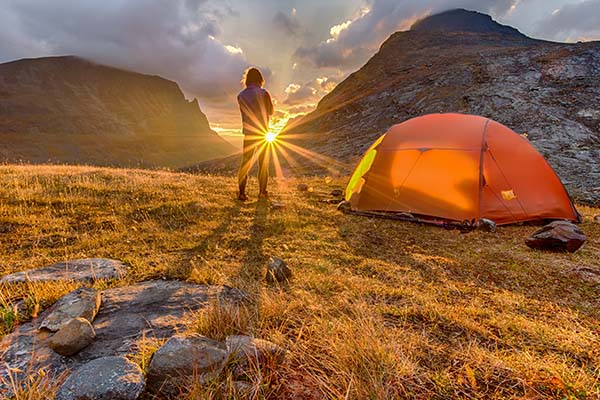
Photography Business: Being up at every sunrise and sunset is ultimately chasing light. It can become very addicting.
Speaking of which, you captured a beautiful image of the stars. That was the most incredible nontelescopic view of the stars I’ve ever seen. It was of National Geographic quality. Is that one going to be available on your website any time soon?
Maybe. I like it too. Everyone is saying that you can’t take pictures of the stars when the moon is out, which I agree with but you can. Maybe it isn’t what people are looking for. I use the glow of the moon to show the crazy gradient of blues across the night sky. I was happy with how that came out. That’s pretty sweet.
You’ve had all these amazing experiences and gone all around the world. However, there’s been some challenges along the way. First of all, travel is not easy but how do you handle the challenges and roadblocks?
A combination of therapy and blocking out noise but honestly, to me, travel is the most zen place I can ever be. Airports are the most chill environment only because if you can come to terms with having zero control, then everything tells you where to stand and what to do. You have to be somewhere at a time. You’re either going to take off or you won’t. Once you realize that everything’s out of your hands, you generally will be able to figure it out.
If your plane gets canceled, you find another. Give up all control. Trains are the same way. Trains stress me out more though country to country, the apps for locating trains are different. I had one instance where I was leaving Belgium and on a train to I don’t even know where. I was ultimately going to London but I got on a train blindly. I hadn’t read the side of it because I was so close to the time that I was leaving. Once you’re committed to the train, you don’t know where it’s going. You’re like, “I hope I got on the right one.”
Did you?
I did get on the right one, thankfully but there was a solid hour there where I was freaking out and no one came to my train car. It was empty and I was like, “This is the creepiest train of my life.” Planes are way easier but with trains, you get to see more.
I love trains but you’re right, they stress me out more too for the reason that with an airport, the plane is sitting there waiting for you for 45 minutes whereas the train has 4, 2 and 5 minutes and then goes.
If you have a lot of bags, you get destroyed. The whole thing is so ridiculous.
They’re awesome though. I wish that America had a better train system because it is so amazingly convenient. We can’t even go from state to state the way they go from country to country.
It’s true. It’s unbelievable what you can see in that time.
It’s beautiful because you go through towns and then across the countryside. A lot of people like to take Amtrak or the trains still in America, even though it’s not nearly as efficient but it’s a different experience. You’ve been on this journey so I have a couple of questions. First, what are you most grateful for?
I am most grateful for, honestly, anyone that’s given me a chance to photograph one of their projects or trusted me to do my job and execute it to the best that I can. What brings me the most joy is handing out photos to someone and seeing how excited they are by what I’ve created. That is the most satisfying thing in the world. That’s why I keep chasing this. I’m very grateful to my family for supporting me all along this way because without them, I would not have made it far.
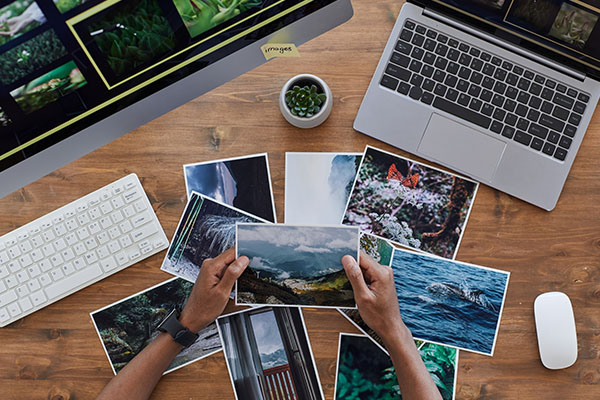
Photography Business: What brings me the most joy is handing off photos to someone and seeing how excited they are by what I’ve created.
What advice do you have for anyone out there who’s passionate about something but afraid or not sure they’re ready to take the leap?
Depending on your situation, take the leap and see where it goes. Even if you have a normal job, you can pursue photography. In the interim of your day job, you can take pictures at night or in any gap that there is. It will push you to not only get out and shoot more. The chances you do have to shoot are a little more precious because they’re more limited. It will push your creativity a bit.
As your photography evolves and if it evolves to where your friends are asking you for photos and all these things, you can take the next step of considering whether you want to jump into it full-time or not, whether it’s feasible. I’m not going to lie and say that it’s super easy to hop into. It still isn’t but it’s very enjoyable. It gets you out seeing things that you wouldn’t see otherwise. Even if you do it as a small thing, it’s worth it.
Where can people see your photography, learn about you or what you have coming up next?
They can see my photography on my website, which is TraboldPhotography.com. My last name is hard to spell. The same thing is on Instagram. My Instagram is more regularly updated than my website. Learn about me. This show is probably the most anyone’s learned about me. Start taking videos.
You got to jump in and take that leap. The educational trip is your first. You’re putting it together and you’ll have more information on that for people to sign up. It is limited. How many people are going to be able to go?
Eight people are allowed to go. I would love for anyone to join. Information should be available in the next couple of weeks. I hope to see people out there, ready to freeze alongside me and see the coolest place I’ve ever been to. It’ll be amazing.
I figure out how to make my way with you. That will be likely the first of many. You can sign up for a newsletter if you’re interested to make this particular trip.
The newsletter will be another way you can learn about me once that starts.
You can sign up still. Thank you so much, Matthew. Is there anything else that you want to share? Anything that we missed?
No, that’s it. Thank you for having me on.
You’re welcome. Thank you for reading. If you liked it, tell your friends. Follow us on Instagram or LinkedIn. The mission of the show is to dig deep into the lives of true leaders so that others can follow, knowing that the path isn’t always easy but the journey is worth it. Enjoy the day and live with passion.
Important Links
- Wimberley Valley Radio
- Ozona Bank
- Matthew Trabold
- DTM
- DTM Trophy
- Instagram – @TraboldPhotography
- Instagram – MVP Business Podcast
- LinkedIn – Stephanie Silver

